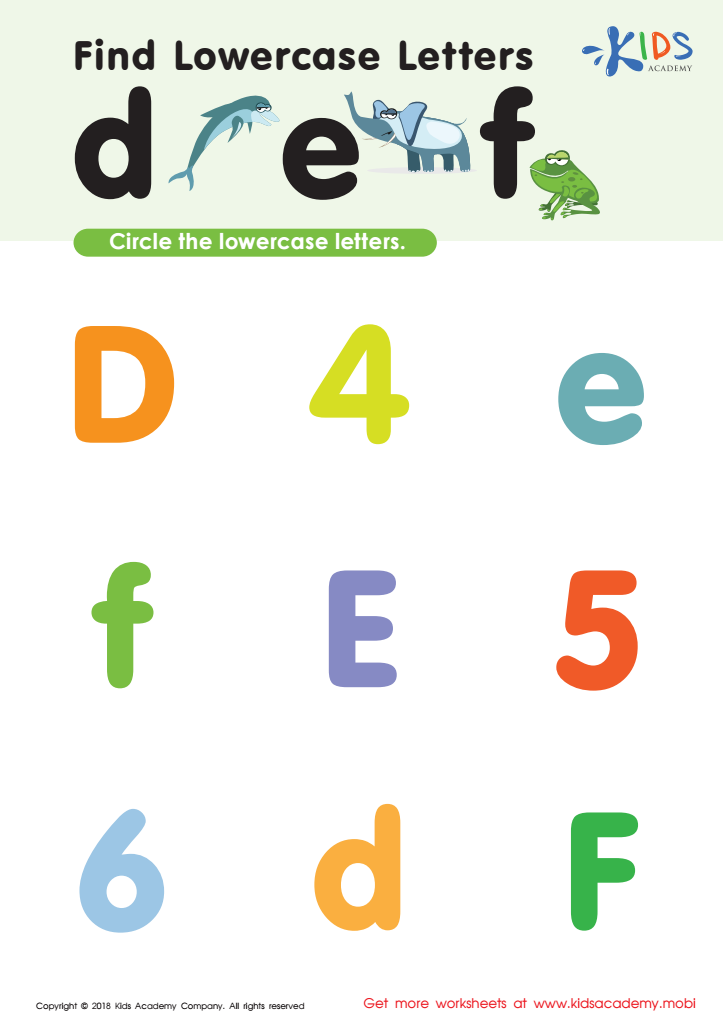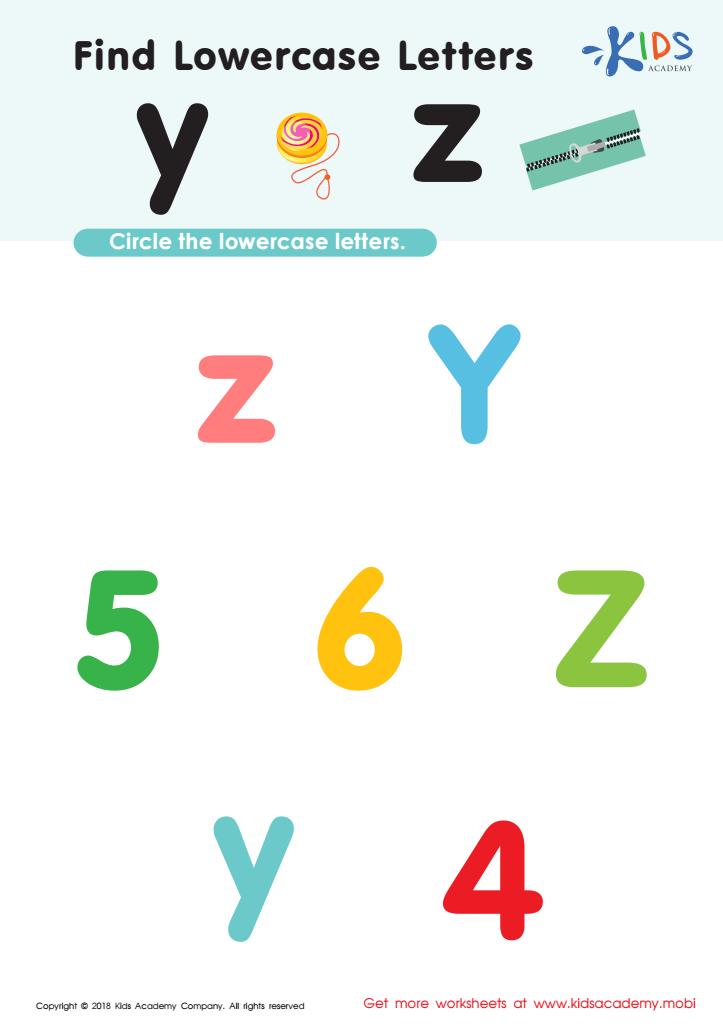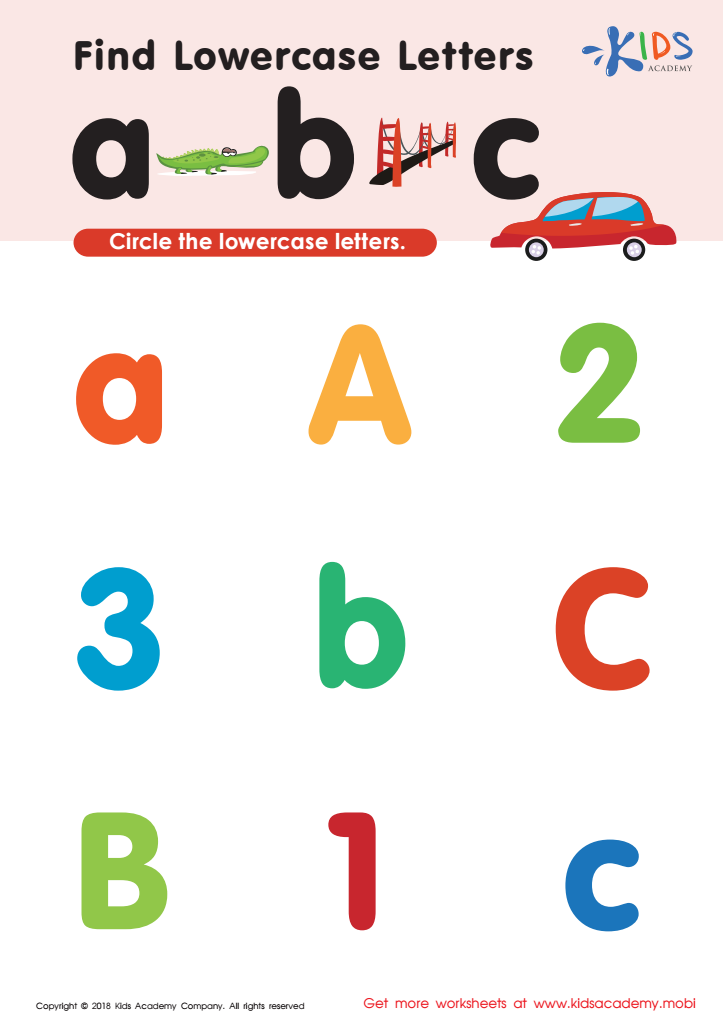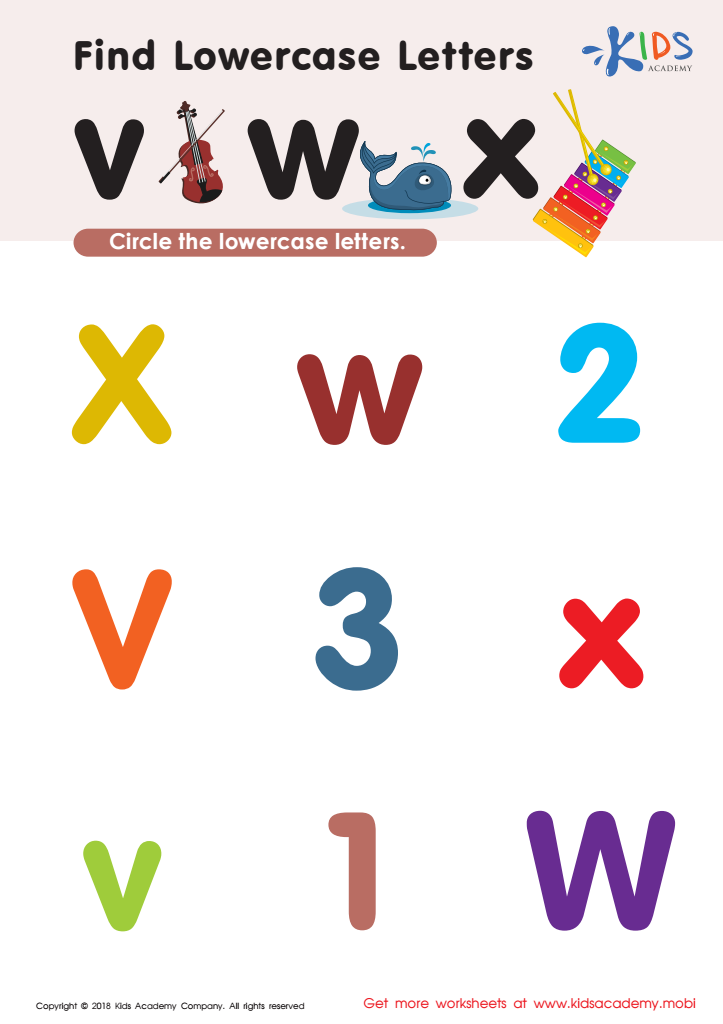Lowercase identification Normal Worksheets for Ages 5-7
4 filtered results
-
From - To
Enhance your child's reading skills with our "Lowercase Identification Normal Worksheets," designed for ages 5-7. These engaging worksheets offer a fun and interactive way for kids to learn and recognize lowercase letters. Perfect for early learners, the activities cater to various skill levels and include tracing, matching, and letter recognition exercises. By practicing with these worksheets, children will develop essential literacy skills, boost their confidence, and enjoy the process of learning. Easy to print and incorporate into any learning routine, our worksheets make learning lowercase letters enjoyable and effective. Start your child's reading journey today!


Find Lowercase Letters d e f Worksheet


Find Lowercase Letters y z Worksheet


Find lowercase letters a b c Worksheet


Find Lowercase Letters v w x Worksheet
Lowercase letter identification is crucial for children aged 5-7, as it lays the foundation for reading and writing skills. During this developmental stage, children are increasingly exposed to print in books, signs, and everyday items, making it essential for them to recognize lowercase letters. Unlike uppercase letters, which often stand alone, lowercase letters comprise the majority of texts that children will read, significantly impacting their literacy development.
When parents and teachers emphasize lowercase identification, they help children gain confidence in their ability to decode words and understand sentences. Mastery of these letters facilitates smoother transitions into reading fluency, comprehension, and spelling. Moreover, many commonly used words, known as sight words, frequently include lowercase letters, making recognition vital for early reading success.
Additionally, understanding lowercase letters supports fine motor skills development, as children learn to write them correctly. This knowledge is also foundational for digital literacy, where lowercase letters are often used in URLs, emails, and text messages.
By prioritizing lowercase letter identification, parents and teachers ensure that children develop strong literacy skills that can serve as a springboard for academic success and lifelong love for reading and writing. Engaging students with playful activities can enhance their interest and proficiency in identifying lowercase letters, offering them a solid framework for future learning.
 Assign to My Students
Assign to My Students




















